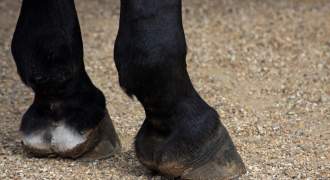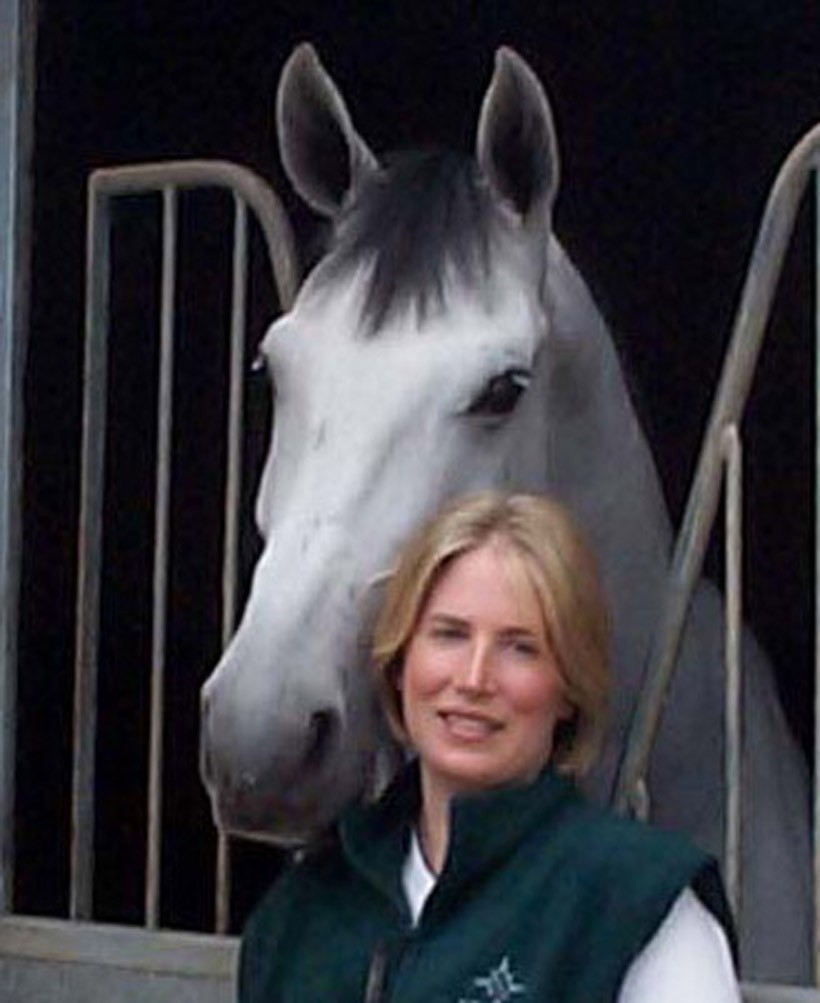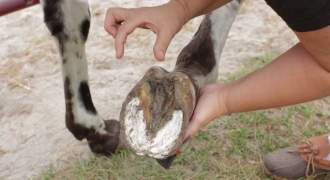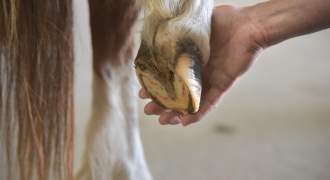
Six ways to prevent laminitis in horses
We've come up with a list with six ways to prevent laminitis in horses. If your horse could write you a ‘to do’ list, ...
17 April 2018
Read More
Our guest blogger Clare Barfoot, who is a registered nutritionist, member of the prestigious Laminitis Consortium and Research and Development Manager at SPILLERS® gives her expert advice on how to feed horses with laminitis safely.
Some horses and ponies are more susceptible to laminitis than others. While unfortunately we can’t use a crystal ball to identify which ones might be at risk, science provides us with some helpful guidelines; if your horse is overweight, a good doer, of native breeding, has PPID (often referred to as Cushing’s Disease) or has had laminitis in the past then it is fair to say he or she is in a higher risk category and should be fed and managed accordingly.

Here are my top tips on how to feed horses with laminitis:
Raise the fibre, reduce the starch and hold off on the sugar
Your mantra should be high fibre, low starch (which is a form of carbohydrate) and low sugar, all year round. Fibre is king when it comes to healthy eating, for every horse – laminitic or not. Usually a horse’s main source of fibre is from grass, hay and haylage but for those at risk of laminitis you need to take extra special care.
Grass is not always Doctor Green
Always err on the side of caution and don’t let your horse gorge on grass, especially at times of peak growth in the spring and autumn when it may be high in fructan – the storage form of sugar. Use a strip grazing method to restrict access, preferably all year round, and/or gradually introduce your horse to a grazing muzzle.
Hay or haylage?
Laminitis susceptible horses and ponies need hay or haylage with a low water soluble carbohydrate (WSC) content of less than 10% (dry matter). Choose a low WSC hay over a low WSC haylage if you can. Although both can have a high WSC content, hay is likely to be the safer option. Remember to feed by (pre soaked) weight – contact a nutrition Care-Line for guidance. ADD SPILLERS LINK
How can I get my hay analysed?
Often late cut hay or haylage has a lower nutritional value than crops cut in May and June but the only sure way to tell is to have it analysed. Many of the horse feed companies provide a hay analysis service and it’s well worth taking the trouble to send some samples off so that you can find out exactly what you are feeding.
If in doubt soak it
Another option if you are feeding hay is to soak it first which will reduce the WSC content. Ideally give it 12-16 hours in tepid water in cooler weather or no more than 6 hours in warm weather.
Other fibre options
If you are worried about the nutritional value of your hay you could use a hay replacer. Ideally use a product that has been approved by the Laminitis Trust as you can be sure it will be low in starch and sugar. Remember to speak to your vet or a reputable nutritionist before changing your horse’s feed and make any changes gradually to keep your horse’s digestive system happy!
Remember vitamins and minerals
Every horse, laminitis-prone or not, needs a balanced supply of vitamins and minerals to keep them in peak health. Often the safest option for the laminitis susceptible is to provide a low calorie balancer. Alternatively if you are feeding a good hay replacer with added vitamins and minerals it should contain an adequate supply of nutrients. Be sure to avoid mixes and cereal-based feeds as they are high in starch and absolutely not what your horse needs!
Did you know?
PPID increases susceptibility to laminitis but new research has raised a question about testing for this condition. SPILLERS® has recently been involved with a study that has shown that the equine diet, and more specifically, a starch rich diet, can influence adrenocorticotropin hormone or ‘ACTH’. This could potentially lead to an incorrect diagnosis in some horses when ACTH is used to test for Pituitary Pars Intermedia Dysfunction (PPID). The threshold values for diagnosis of the condition currently vary dependent on the season, but these new findings suggest that diet should also be considered.
Find out more about laminitis here
Find out more about SPILLERS® here www.spillers-feeds.com
References
Longland A, Barfoot C, & Harris P, (2014) Effect of water temperature and agitation on loss of water –soluble carbohydrates and protein from grass hay: implications for equine feeding management. Veterinary Record 174 68.
Luthersson N, Mannfalk M, Parkin TDH, Harris P, Laminitis: Risk factors and outcome in a group of Danish horses, Journal of Equine Veterinary Science (2016), doi: 10.1016/ j.jevs.2016.03.006.
Menzies-Gow N.J, Harris P.A, Potter K. and Elliott J. (2016)Prospective cohort study evaluating risk factors for the development of pasture-associated laminitis in the UK EVJ Version of Record online: 25 AUG 2016 | DOI: 10.1111/evj.12606
Jacob S.I., Geor R.J, Weber P.S.D., Harris P.A., McCue M.E. 2018 Effect of dietary carbohydrates and time of year on adrenocorticotropic hormone (ACTH) and cortisol concentrations in adult and aged horses. Domestic Animal Endocrinology, 63, 15-22

We've come up with a list with six ways to prevent laminitis in horses. If your horse could write you a ‘to do’ list, ...
17 April 2018
Read More
Be Aware Of The Signs Of Equine Laminitis. If you believe equine laminitis only happens to fat little ‘Thelwell’ ponie...
14 March 2017
Read More
The Three Main Causes of Equine Laminitis. Systemic Inflammatory Response Syndrome (SIRS). This is when laminitis occurs as a seco...
13 March 2017
Read More